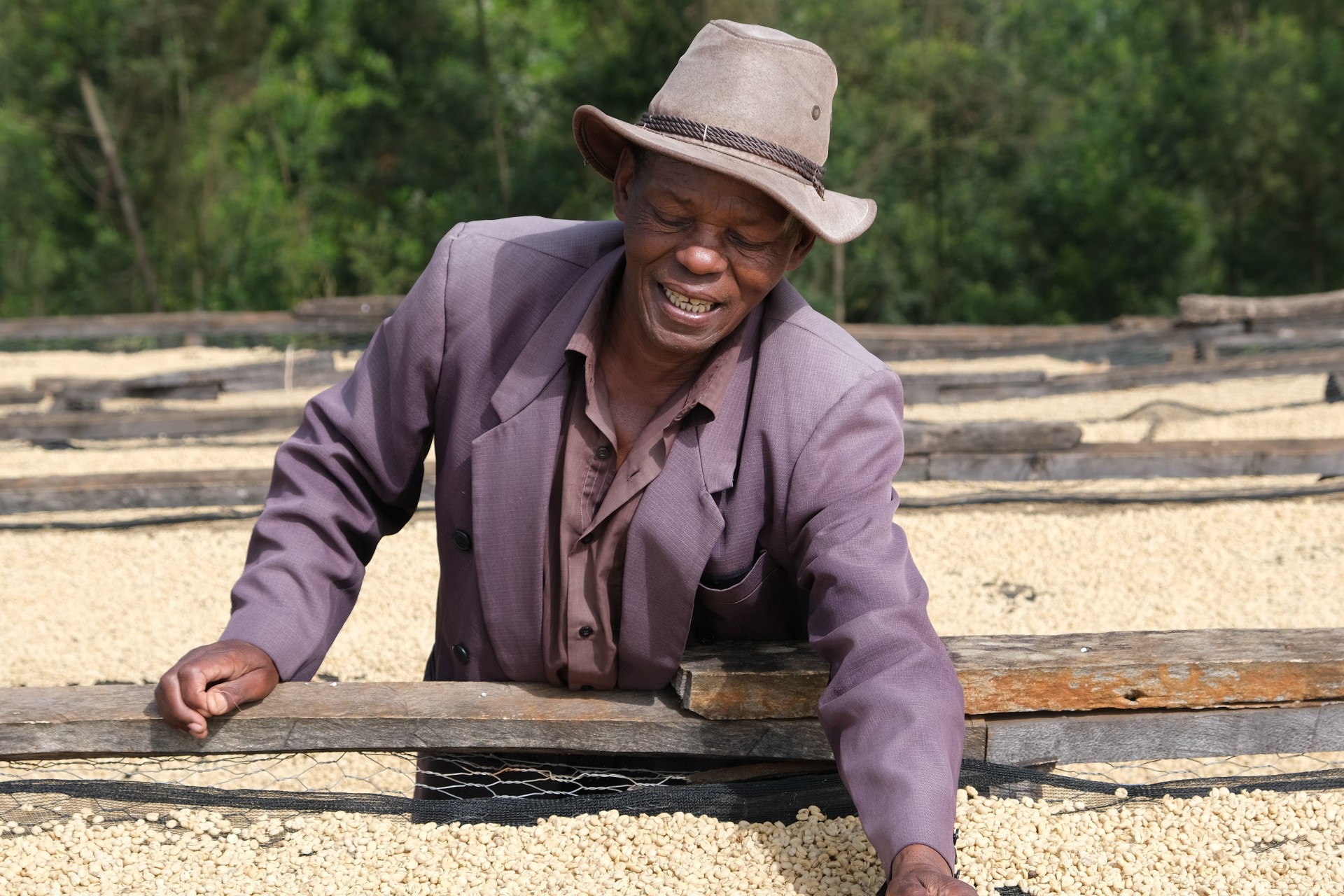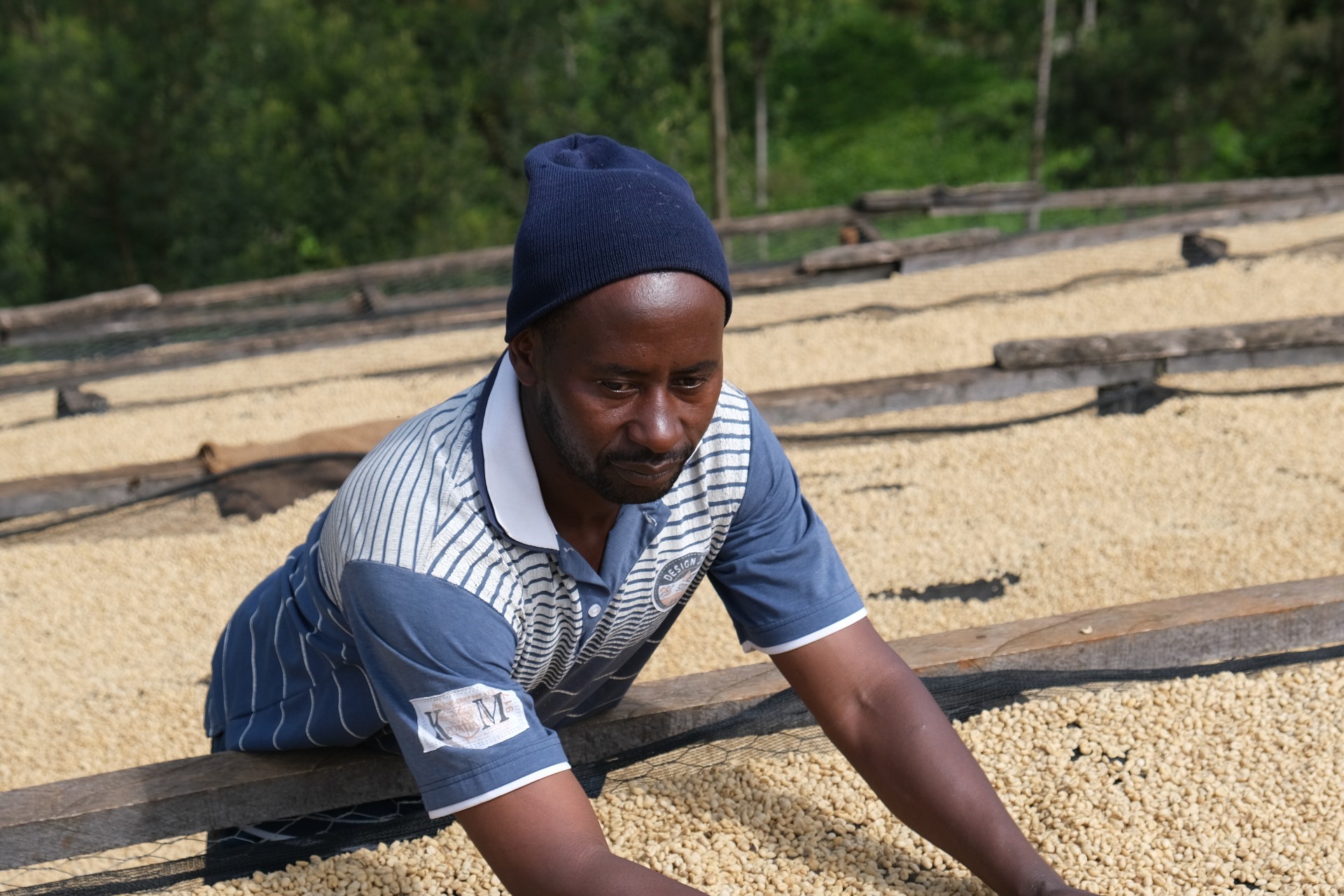Kenya Kiambu Thiririka Ndundu AA 14N0009 Ecotact
Bags 0
Warehouses Oakland
Flavor Profile Red grape, mango, floral, marmalade, chocolate
Out of stock
About this coffee
Grower
1,005 farmers organized around the Ndundu Coffee Factory
Altitude
1600 – 1800 masl
Variety
SL-28, SL-34, Batian, Ruiru-11
Soil
Volcanic loam
Region
Kiambu County, Kenya
Process
Fully washed and dried in raised beds
Harvest
October- January
Certification
Conventional
Coffee Background
Kiambu county sits adjacent to Nairobi, Kenya’s capital city, and is a coffee powerhouse. Along with an extensive community of coffee mills, exporter warehouses and quality labs, the Kenya Coffee College and Coffee Research Institute (near Ruiru Town, after which the disease-resistant hybrid is named), Kiambu is also home to many of Kenya’s largest and oldest coffee estates. Because of its proximity to Nairobi, Kiambu is urbanizing quickly. Ruiru Town is Kenya’s 6th largest urban municipality and if development continues the way it has, many expect a majority-urban county in just a few years. Yet Kiambu continues to be home to some of Kenya’s most established producer groups, including Thiririka Farmers Cooperative Society (FCS), which is also the largest cooperative in the county.
Kenya’s coffee is dominated by a cooperative system of production, whose members vote on representation, marketing and milling contracts for their coffee, as well as profit allocation. The Ndundu processing station, or “factory” as they’re known in Kenya, has over 1000 contributing farmer members and is one of 3 total factories that comprise its local farmer cooperative society (FCS), called Thiririka.
Kenya is of course known for some of the most meticulous at-scale washed processing that can be found anywhere in the world. Bright white parchment, nearly perfectly sorted by density and bulk conditioned at high elevations is the norm, and a matter of pride, even for generations of Kenyan processing managers who often prefer drinking Kenya’s tea (abundantly farmed in nearby Muranga county) to its coffee. Ndundu factory is no exception: cherry is delivered each day by participating cooperative members, sorted for ripeness, and then depulped and fermented overnight. Once fermentation is complete it is washed with freshwater in long channels and sorted by density into “P1” (the highest quality), “P2”, “P3”, and “P light”. Each density grade is dried individually on raised beds between 15 and 21 days and stored separately for conditioning on the factory property. Ndundu factory, like more and more factories in central Kenya, skips the post-fermentation soak in favor of expediency and chooses instead to let the washing stage clean the parchment to spec.
“14NG0009” in the title refers to this coffee’s “outturn” number. Outturn numbers are unique microlot codes that are given to each and every batch of parchment delivered to dry mills from individual factories or estates anywhere in Kenya, and are the units on which Kenya’s entire microlot export system is built. Outturns in Kenya are tracked with a shorthand code that places the specific batch of parchment coffee in time, place, and sequentially with other coffees. Outturns are stylized as an 8 or 9-character code, including a 2-digit “coffee week” number, a 2-letter mill code, and a 3 or 4-digit intake number for the coffee’s delivery. So this particular lot was delivered in harvest week 14, to the NKG dry mill (code “NG”), and was the 9th delivery that week.
High FOB prices for great Kenyas, while the norm, are not a panacea, and in Kenya in particular the number of individual margins sliced off an export price before payment reaches the actual farms is many, leaving only a small percentage to support coffee farms themselves, and most often this arrives many months after harvest. However, Kenya coffees are sold competitively by quality, which means well-endowed counties like Kiambu achieve very high average prices year after year. As a result, the majority of the smallholders here, with a few hundred trees at the most, along with additional employment or land uses in the highlands, are generally considered to be middle class.




